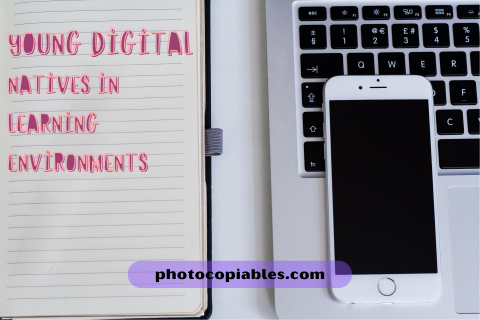In today's digital era, we often hear the argument of digital natives versus digital learners. Are digital natives truly better at handling web-based technologies than their counterparts? Let's dive into the definitions. Digital natives are those born in the digital era, while digital learners learn about new technologies as they grow. Although digital natives may initially appear more adept at deploying new technological skills, their classroom superiority diminishes greatly. They must learn new skills step-by-step, just like digital learners. Even easy steps such as signing up or logging in can be a challenge for young learners.

That being said, the characteristics of digital natives bring a unique dynamic to the classroom environment. They have shorter attention spans than previous generations, which means educators need to create a time-based plan for classes that tackles their short attention spans while also keeping them focused on the lesson. Nonetheless, digital natives possess a range of skills that set them apart from other generations. They have innovative and creative thinking, which allows them to come up with inventive ways to use technology to solve problems or create new products. Additionally, they are skilled at multitasking and can handle multiple activities or tasks simultaneously, seamlessly switching between different applications or devices. These abilities give digital natives an advantage in today's technology-driven world.
Implications for Education
As young digital natives, today's students are constantly surrounded by technology, and incorporating it into classroom activities and assignments can provide an effective learning experience. However, to ensure that the use of digital tools and technologies is both engaging and productive, there are several considerations that educators must keep in mind. From addressing technical issues to fostering responsible digital citizenship, these bullet points provide a comprehensive guide to creating a successful digitally-enhanced learning environment.
- Incorporate technology into classroom activities and assignments to provide an effective learning experience for digital natives.
- Encourage students to explore new technologies and applications to foster their innovative and creative thinking.
- Ensure that the digital tools and technologies used in the lesson are appropriate for the lesson and the age group of students.
- Do not let digital tools and technologies take up too much class time, as students' short attention spans may get distracted by them. Instead, create a time-based plan for the lesson.
- Technical issues should be addressed before the lesson to ensure that all aspects of the lesson, such as internet connection, equipment, software, and tools, are working properly. Have backup plans in case of technical problems.
- Digital tools and technologies should be accessible to all students, including those with disabilities. Accommodations should be made as necessary.
- Data privacy and security should be taken seriously, and educators should follow school policies regarding data privacy and security. Any data collected during the lesson, such as student work or assessments, should be protected and secure.
- Students should understand how to use digital tools and technologies responsibly and ethically. Educators should teach digital citizenship, including issues such as online safety, cyberbullying, and copyright laws.
- Providing feedback to students on their digital work is essential for improving their understanding and use of digital tools and technologies. Use the feedback to improve the lesson and help students learn better.
By being aware of these considerations and taking the necessary precautions, educators can effectively enhance their lessons with technology and provide engaging and effective learning experiences for their digital native students.
This blog post is co-created with an LLM chatbot.






